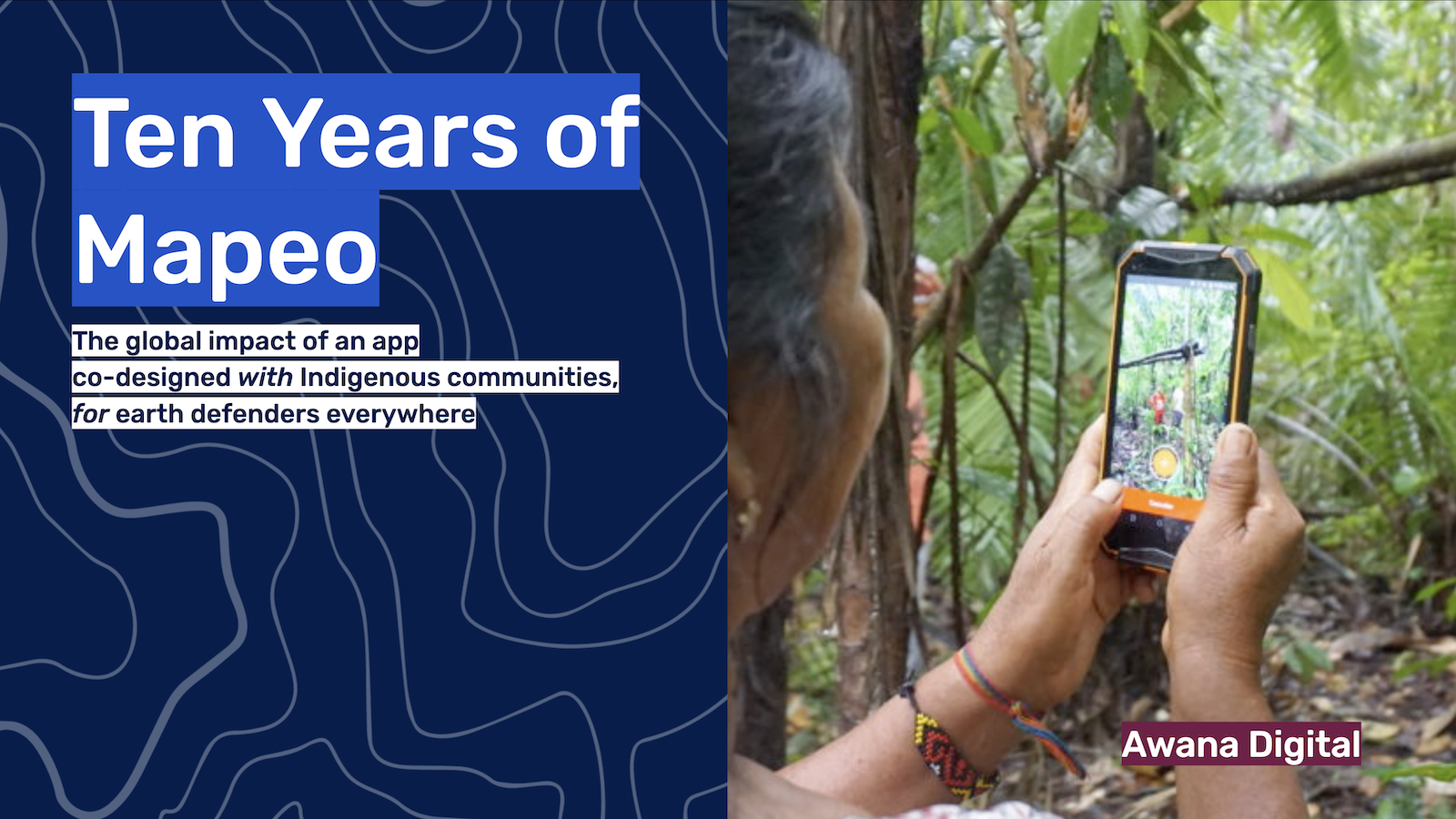In honor of Indigenous Peoples Day and the recent launch of our new tool CoMapeo, Awana Digital is publishing an impact report on the past decade of Mapeo use around the globe. Download and read the report here:
Why this report? In 2013, our team began working in the Amazon Rainforest at the invitation of local Indigenous groups who were facing increasing threats, including oil spills, land invasions, and deforestation. They wanted to use technology to map their lands and monitor what was happening, but existing tools were either too expensive, hard to use, or required internet access. We wanted to see if it was possible to create a tool that would work for their unique needs. That's how our shared journey co-designing Mapeo started, and it's now used by thousands of people around the world to help protect, manage, and secure rights to community lands.
Now it’s over a decade later, and we have launched a new tool, CoMapeo, which builds on the legacy of Mapeo but allows users to go even further in their use of technology for environmental protection. As we begin to transition partners to CoMapeo, we decided to take a moment to pause and reflect on the impact of Mapeo over the past decade. This report aims to document and celebrate the exceptional work that our Indigenous partners have accomplished using Mapeo, achieving critical victories for Indigenous land rights and the health of our shared planet.
The report serves as a moment to take stock of all the known uses of Mapeo - from the thousands of unknown-to-us users around the world who downloaded it from the Google Play Store, to 30 known projects across four continents, which this report investigates more closely. Perusing the report, we hope to convey both the breadth and depth of Mapeo’s impact through three main scopes: land rights, monitoring environmental threats and biodiversity monitoring.
We also know that the best is yet to come. As of the publishing of the report, many of the highlighted projects are transitioning to CoMapeo, where they will be able to accomplish even more thanks to new features, and a codebase focused on making local users ever less dependent on outside support. Our partners’ deep relationships with Mapeo over the past decade — the thousands of kilometers walked with it; the sacred sites, medicinal plants and human rights violations documented with it; the conversations between women, men, elders and youth which have happened with it in their hands — are reflected in the stories in this report, and are also the heart of why we have invested in the next chapter of the story by launching CoMapeo.
Our intentions with this report are to fully document the impact of Mapeo over the past decade, while honoring the numerous partners and donors who’ve made the story possible. Most importantly, we hope to inspire others to take action to protect people and the planet. While Mapeo & CoMapeo are co-designed with Indigenous communities to support their unique needs, the tools are free and available for any group seeking an easy-to-use, resilient and data-protected tool to gather geographic information, document what is important around them, and protect what they love.

